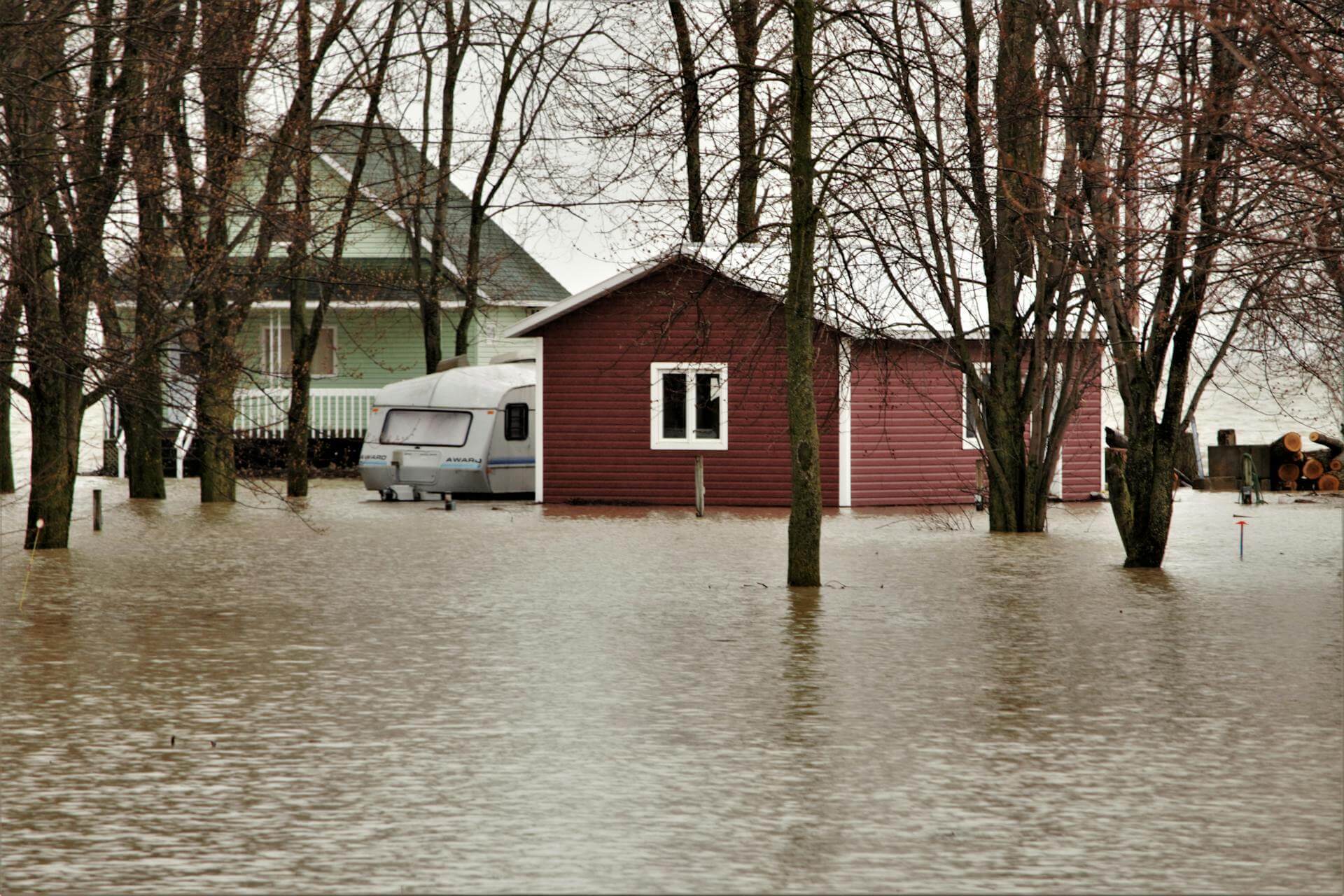
Flooding is the most common and costly natural disaster in the U.S. Many homeowners live in flood-prone areas, but even those who don’t live in a flood zone are at risk. Flash rains and ice melts can cause flooding when the ground can’t absorb the water fast enough.
Just a small amount of floodwater can cause major damage. According to the Federal Emergency Management Agency (FEMA), just four inches of water in a 2,500-square-foot home would likely result in $38,552 in damages!
Uninsured flood victims may qualify for low-interest loans or government grants, but assistance depends on whether the area is officially declared a disaster. Funds usually run out quickly and only cover a fraction of the cost to rebuild or replace your home.
No matter your zone, standard homeowners and renters insurance don’t cover flood damage. You’ll need a flood insurance policy to offset your costs. Otherwise, you might pay out of pocket.
FEMA’s National Flood Insurance Program (NFIP) can help assess your flood risk. The NFIP runs flood mapping for the entire country and determines where the highest and lowest risks of damage are.
The zones are rated using letters:
But don’t be deceived by your flood ranking: One in three insurance claims involve homes in low-risk zones. In January 2023, NFIP paid $26 million to 489 California NFIP policyholders for flooding due to severe winter rainstorms. The average claim was $53,000.
If you live in a flood zone, your mortgage lender will require you to obtain flood insurance. Typically, that coverage must equal at least what you owe on your mortgage and meet specific legal requirements.
Policies have a 30-day waiting period before coverage begins. While NFIP sponsors most flood insurance, only those who live in NFIP-participating communities can purchase this coverage. Some communities even qualify for discounts on coverage based on their flood mitigation improvements. Your insurance professional can determine if your city or county participates and show you the types of coverage available for your property.
The maximum NFIP protection for a residential structure is $250,000, and the limits for contents top out at $100,000. NFIP covers your personal property for actual cash value, not replacement value, so your things will be reimbursed with depreciation.
NFIP doesn’t cover the contents of finished basements, swimming pool damage or the cost of living elsewhere while your home is being repaired.
Unlike a private insurer, NFIP cannot drop your policy because of claims or risk. It also has regulations that cap premiums. NFIP is a federally backed policy, so you won’t have to worry if the insurance company goes bankrupt.
You can only buy NFIP coverage through insurance agents, even though the government sponsors it. Call your insurance agent to get a quote.
More insurers are offering excess flood insurance to supplement regular NFIP coverage, especially for high-value homes and waterfront properties.
Excess flood insurance can be expensive. Pricing varies depending on your home’s age and location, whether it is elevated, its distance from the water, which way it faces and the deductible you’re willing to pay.
Excess policies kick in after your NFIP policy limits are exhausted. Since private insurers underwrite excess policies, they have broader coverage options. Your agent can help you decide if excess flood coverage suits you.
New datasets and advanced tools like artificial intelligence have made flood coverage more affordable. Private flood insurance is an alternative to NFIP coverage, not in addition to it. Private policies have a shorter waiting period before coverage begins, usually 14 days or less.
Private flood insurance has a few perks that NFIP doesn’t such as:
The government doesn’t guarantee private flood coverage. However, many private insurance companies are regulated by their state agencies, with state-level guaranty funds that can help if the company goes bankrupt.
Ask your insurance agent for help finding a reputable company.
FEMA’s Risk Rating 2.0 system is changing the way FEMA prices its coverage. The last time FEMA updated its rating system was in the 1970s. It focused on information like property elevation and antiquated flood maps but didn’t account for variables like flood types, severity or rebuilding costs. As a result, FEMA determined that policyholders with lower-value homes may have been charged too much based on their risk and rebuilding costs, while those with higher-value homes may have paid too little for their risks and costs.
Risk Rating 2.0 incorporates data points to examine how flooding events occur. It uses dynamic data to get a comprehensive picture using information like:
Risk Rating 2.0 views risk as dynamic. Communities can decide about development and infrastructure to increase or reduce the flood risk throughout a community. When the risks change, premiums can change.
FEMA will comply with its existing caps on premium increases (no more than 18%) and help transition policyholders who have substantial increases. And policyholders can still transfer their NFIP coverage discounts to new homeowners when they sell their homes.
You can also do a few things to contain your insurance premiums.
Ask these questions when discussing rates:
Call your insurance agent for a flood insurance quote. They can help you understand your risk and offer advice about NFIP and private flood solutions. As extreme weather events continue across the U.S., now’s the time to prepare. Having adequate flood coverage is a smart first step.
This content is for informational purposes only and not for the purpose of providing professional, financial, medical or legal advice. You should contact your licensed professional to obtain advice with respect to any particular issue or problem.
Copyright © 2023 Applied Systems, Inc. All rights reserved.